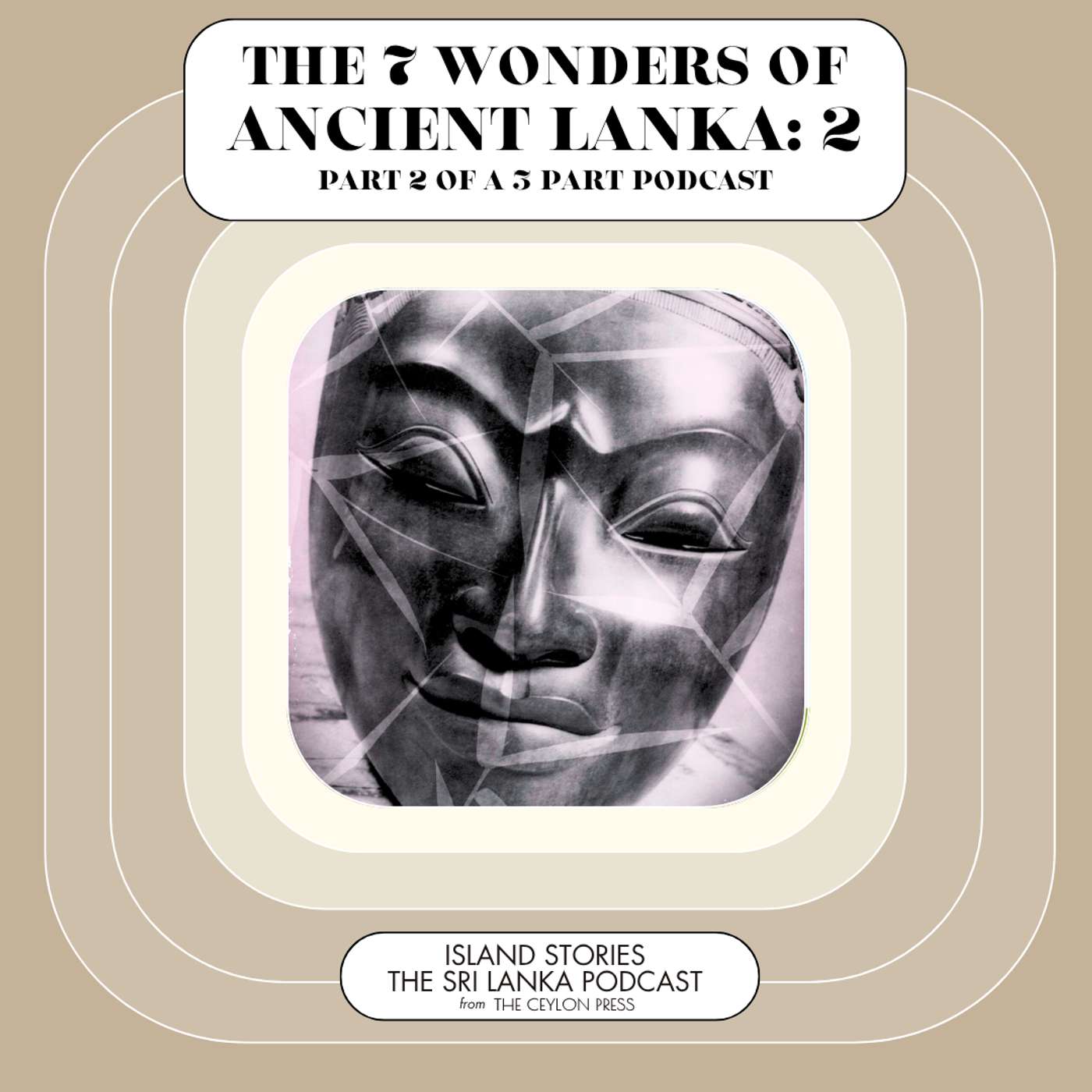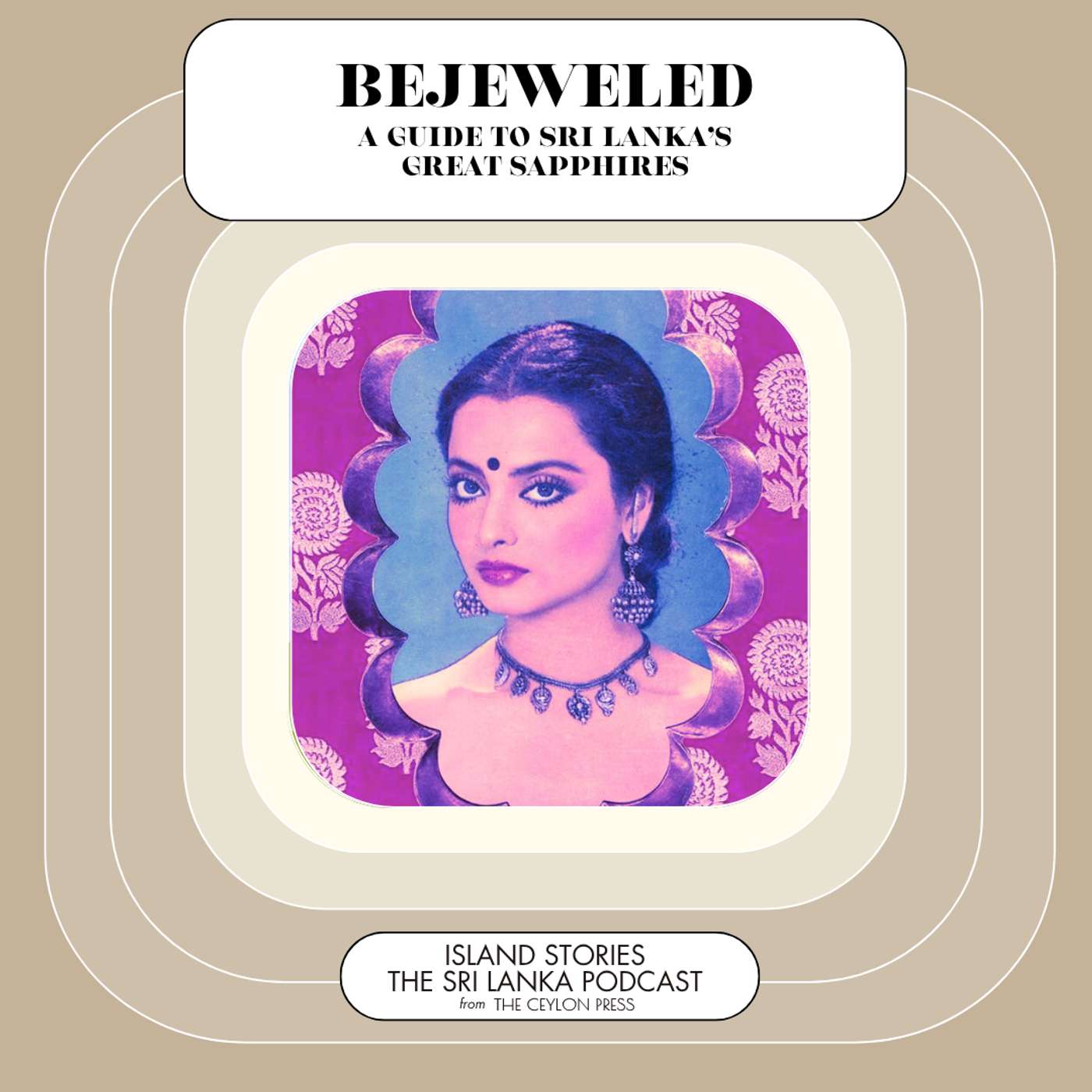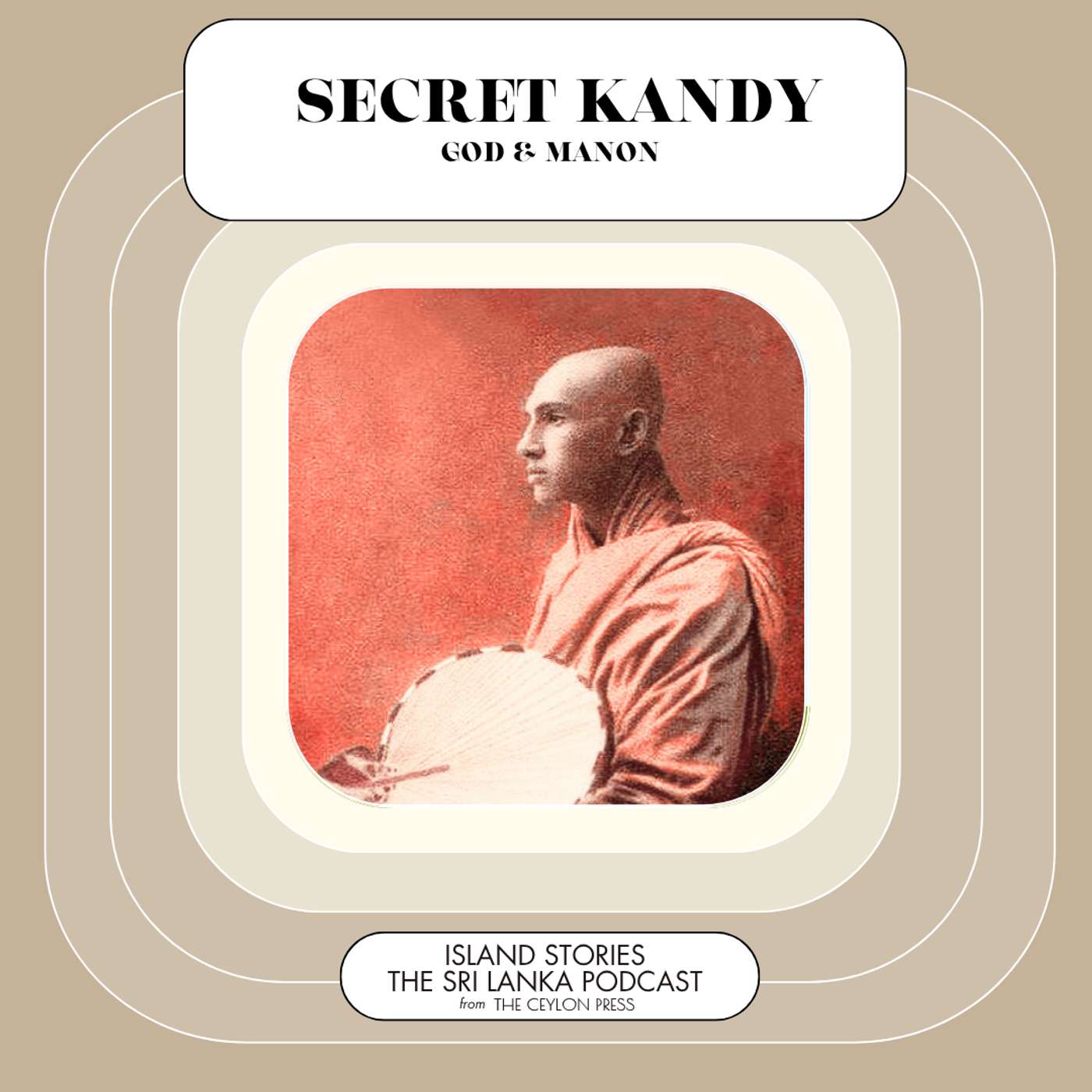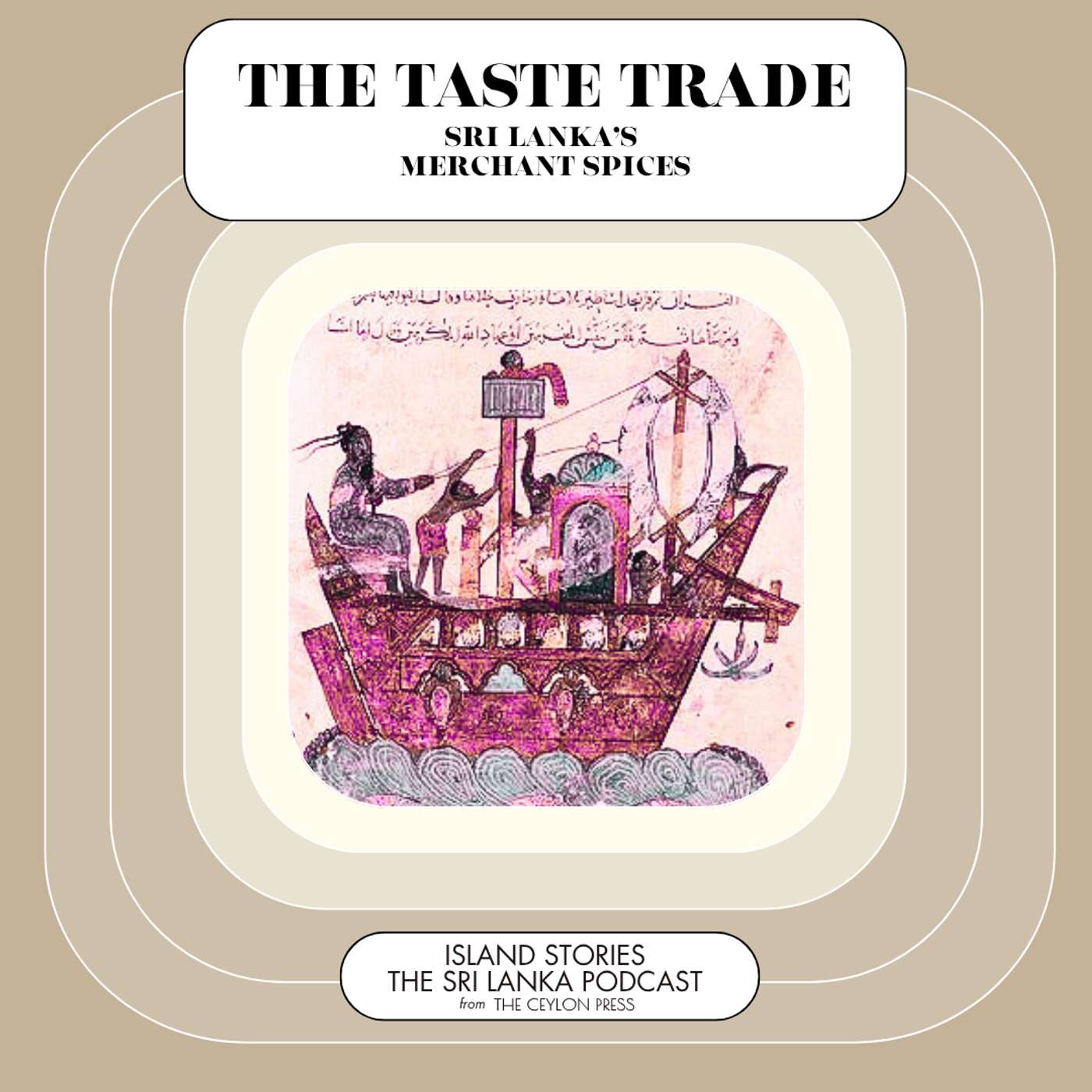Secret Kandy: Five Forgotten Stories
Description
This episode is dedicated to an arc of land that fans out north of Kandy, connected first with the ancient Anuradhapuran kings and their successors before passing to the control of the Kandyan kingdom, whose own borders ebbs and flowed in reaction to European invasions.
This neglected northern section of the Kandyan kingdom centred on three main provinces, Anuradhapura to the far north, Matale to the northeast and the Seven Korales, to the northwest.
From the arrival of the Portuguese to the final annexation of the kingdom by the British in 1815, control over these three distant provinces fluctuated. But regardless of who was in actual control, noting could blur the fact that in almost all respects of topography, climate, history, geography, resources and economy, these areas were utterly different to the high hilly and mountainous character of the rest of the kingdom.
Although ruled in most part by the Kandyan kings, their own ancestry was much much older, going back all the way to the fist Singhala king in 543 BCE. To walk through their fields and forests and witness their surviving ancient buildings is to see how the last Singla stronghold grafted itself onto the most ancient part of Sri Lanka like a limpet.
And probably one of the best ways to experience it is to take a circular tour of 5 of the most significant temples that dominate this eluding land - to placs long lost to modern travellers.
The circuit starts at the Vilbawa Rajamaha temple, which legend connects to Kuveni, the wife of the island’s first king, Vijaya. But Kuveni was not simply a wife – nor even a weaver of cloth, a mother, lover, or queen. Shew was also a demon, a metamorphoser, an outcast, an avenging fury, suicide, traitor, murderess, ghost, and mistress of deception. A descendant of gods, she is also a goddess to the country’s still living aboriginal peoples.
Kuveni, and her husband Vijaya, were the pin-up lovers of their generation, the Bonnie and Clyde of 543 BCE. Only theirs was a more unorthodox passion - more akin to Dido and Aneas, with the queen immolating herself. But whilst it is hard to find a corner of Sri Lanka that is not branded “Vijaya,” in besotted memory of the country’s founding paterfamilias, it is much harder to find similarly smitten organisations who bear the name “Kuveni.” Coming from a nation fond of boasting the modern world’s first female head of state, Sirimavo Bandaranaike, in 1960, this seems a monumental omission. But delve a little further and it becomes exactingly clear why Kuveni is the queen the country is too alarmed by to properly acknowledge.
Kuveni was to confound and challenge all ancient ideas of womanhood; and go on challenging them to this day. Her story starts as she sits trapped at in her modest palace, a pawn in her father’s political armoury. She is, naturally, no ordinary princess. Descending from King Ravana, the ten-headed evil demon king who fatally kidnapped the wife of the Supreme Being – her bloodline offers up a clue, if ever one was needed, to a family proclivity for prolific violence, chaos, and injustice. But in Vijaya she spots a way to escape the prison of her family.
Vijay, a shaved head fugitive with a penchant for what The Mahavamsa calls “evil conduct and … intolerable deeds,” was exiled by his father and arrived in Sri Lanka, a man in need of friends. Friends, land, food: in fact, at the time he arrived on Sri Lanka’s shore, he was a man in need of pretty much everything. And in Kuvani he found just about everything.
Overcoming some immediate disagreements in which she almost eats him and imprisons his entire band of feckless followers, she performed a faultless volte-face, gives them food and clothing and, according to the ancient Mahavamsa Chronicle, beaming with broad indulgence, if Chronicles can be said to beam, “assumed the lovely form of a sixteen-year-old maiden.”
Although marriage was what Vijaya and Kuveni agreed on, so too did they execute a plan to annihilate her Yakka tribe. But much good any of this did her. In using Vijaya, she was, in turn, to be even more devastatingly used by him. Soon after inaugurating his new kingdom at Tambapanni, and fathering two children, Vijaya abandoned her, sending to India for a more respectable princess, one who was drawing-room perfect, and banishing his native wife to the wilderness.
Rejected by both husband and the people she came from and had betrayed and killed, Kuveni climbed or was forced to the top of a mountain and hurled down, cursing her disloyal husband as she died. Her husband was to die without heirs. His successor was struck down by a (presumably related) disease, and his entire children made demented by bloodshed, civil war, and familicide.
Across the entire island a lonesome scrap of haunting folklore offers a hint as to the final tomb of Queen Kuveni. There is nothing to verify it except the curious behaviour of the local people. Visitors to the village are welcomed to its little temple, the Maligatenna Raja Maha Viharaya, but not permitted to walk to the top of the little hill above it, where the queen’s crypt is said to lie.
About 15 miles on from here is the Ridi Viharaya. Although substantially restored in the 18th century by the Kandyan king, Kirti Sri Rajasinghe, the temple dates back to the 2nd century BCE – roughly the same time as the text of the Rosetta stone was chiselled into a basalt slab in distant pharaonic Egypt.
To better understand the supreme importance of this ancient temple, take a look at pictures of the oldest of the island’s 3 greatest stupas, the Ruwanweliseya, built between 161 to 137 BCE by King Dutugamunu.
The first steps in its construction are told in extraordinary detail by the Mahavamsa Chronicle. “King Dutugamunu had the workers dig a 7 cubit deep excavation. He had soldiers brought in round stones and had them crushed with hammers. Crushed stones were placed at the bottom of the excavation and compacted using elephants. The Elephants had their feet bound with leather to protect their feet. Fine clay was brought in from a nearby river. This clay was known as butter clay since it was very fine. King Dutugamunu ordered to spread butter clay on top of crushed stones. After placement of the butter clay layer, the King ordered to bring bricks. Bricks were placed on top of the butter clay layer. On top of bricks, mesh of iron was placed. Mountain crystals were placed on top of iron bars. Another layer of stones was placed on top of mountain crystals. On top of stones, 8” thick copper plate was placed. Copper plate was sprayed Arsenic and Sesame oil. On top of the copper plate, seven inch thick silver plate was placed.”
And that was just the beginning. The king was to die before the stupa was completed and the Mahavamsa tells the story of the dying monarch being caried on a palanquin to see the works. Standing for centuries, and now much restored, its fabled relic chamber has yet resisted all attempts at excavation. Within it is said to be a vessel filled with Lord Buddha’s artifacts, placed atop a seat of diamonds, encased in a golden container adorned with gems, and set inside a room decorated with murals and a sliver replica of the Bo Tree.
The Mahavamsa Chronicle notes its sovereign importance: “The relic-chamber shall not shake even by an earthquake; flowers that were offered on that day shall not wither till the end of Buddha Gotama's Dispensation; the lamps that were kindled shall not be extinguished; the clay that was mixed with perfume and sandalwood shall not dry; even a single scratch shall not appear within the relic-chamber; stains shall not appear in any of the golden goods that were offered.’”
The money for all this construction came from silver ore that was mined from beneath the Ridi Viharaya, the ore ...
























